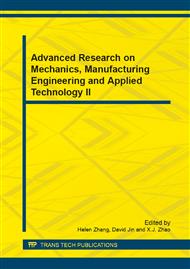p.525
p.528
p.532
p.537
p.543
p.547
p.552
p.556
p.560
Applied Technology and Application of Printing Materials in Note Methods of Interpretation
Abstract:
] In interpretation, linguistic transmitted is often through many different carriers. As for the different carriers, applied technology and printing materials are regarded as very important ways for improving linguistic transmitting abilities. Although many different modes have been tried and some efficiency can be seen during this time. During the course of interpretation,note method is very special and useful for the interpretation. At the same time, the proper application of printing materials is also analyzed for improving the efficiency of interpretation, in the course, the author finds out that each material has its own special characteristics and proper application methods. Thus,it is the special characteristics of printing materials that make applied technology and printing materials play more important roles in interpretation. [key words] applied technology; useful modes; printing materials; interpretation; note methods
Info:
Periodical:
Pages:
552-555
Citation:
Online since:
April 2014
Authors:
Price:
Сopyright:
© 2014 Trans Tech Publications Ltd. All Rights Reserved
Share:
Citation:


